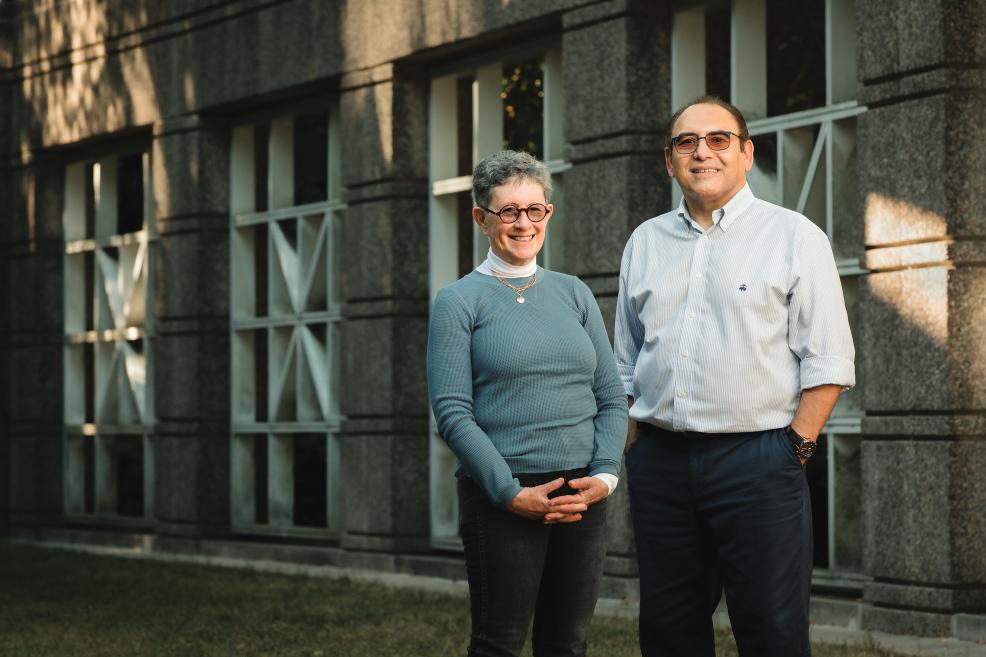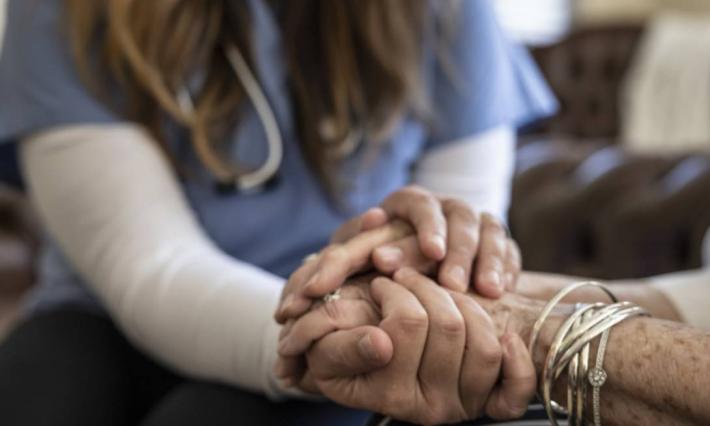There’s new hope for some lymphoma patients who’ve run out of options. Called a “living drug,” the treatment involves removing white blood cells called T cells from a patient’s body, genetically modifying the cells in a lab, and then infusing them back into the patient.
Unlike a pharmaceutical with a defined chemical formulation, each batch is made from living cells from an individual patient.
It’s approved for people who have failed at least two lines of treatment for several kinds of non-Hodgkin’s lymphoma: diffuse large B-cell lymphoma (DLBCL), primary mediastinal large B-cell lymphoma (PMBCL), high grade B-cell lymphoma, and DLBCL arising from follicular lymphoma.
Richard Carroll, a retired deputy sheriff from Moore County, North Carolina, received the treatment at the Duke Adult Bone and Marrow Transplant Clinic last year.
He watched while his T cells were collected during a procedure that took several hours. Blood flowed out of his body through an IV tube, and into a machine that removed T cells. Then the blood flowed back into his body through another IV tube. His T cells were frozen and shipped to a lab in California. There, they were “infected” with a specially designed virus that inserts receptors on the surface of T cells to help them recognize cancerous blood cells.
After his engineered cells were shipped back to Duke, Carroll underwent a few days of mild outpatient chemotherapy to optimize the environment in his body for the modified cells. Two days after completing the chemotherapy, Carroll was admitted to the hospital and received an infusion of his new and improved T cells.
“They are supposed to seek out and destroy cancer and apparently they have done that,” Carroll says. A PET scan several months after the treatment showed no evidence of cancer.
The therapy is called chimeric antigen receptor T-cell therapy, or CAR-T for short. In ancient Greece, a chimera was a fire-breathing monster made of a mix of animal parts—a lion’s head, a goat’s body, and a snake for a tail. A CAR-T cell is a chimera, too—a combination of a T cell with a synthetic receptor that recognizes cancer. That cancer-seeking receptor is key because although natural T cells are capable of killing cancer cells, they are often fooled by cancer’s disguises.
“It overcomes the way the tumor tries to hide from the immune system,” explains Ahmed Galal, MD, who is Carroll’s physician. Galal is a specialist in hematologic malignancies and cellular therapy and the clinical lead for CAR-T therapy at Duke.
“We have about 54 percent complete remission rates,” Galal says, referring to national results for axicabtagene ciloleucel (Yescarta), which is the CAR-T therapy Carroll received. “It looks like when they go into complete remission their chance of continuing is very high. It looks very promising.”
The stunning results of the therapy can come with serious side effects. “These are reversible side effects that don’t leave permanent damage, but they can be life threatening,” Galal says. For that reason, patients stay in the hospital for a week after the infusion, and must commit to staying within a half hour of Duke for a month after that. They are seen daily during that time, and can be hospitalized quickly if needed.
A common side effect is neurotoxicity, which can cause confusion and problems with balance. Carroll felt unsteady while he was in the hospital following the infusion and even walked into a wall. “It threw my equilibrium off. I was uncoordinated,” he says. “But I got over all that.”
Many patients also develop a condition called cytokine release syndrome, which can vary from mild to severe. When T cells kill cancer cells, proteins called cytokines are released into the body. The sudden influx can cause fever, nausea, and low blood pressure. Carroll fainted a couple of times after he left the hospital due to low blood pressure. He was readmitted until his blood pressure could be stabilized with medication.
In addition, the engineered T cells can kill healthy B cells (white blood cells that produce antibodies) along with the cancerous B cells. Sometimes patients become immunocompromised and need infusions of antibodies.
Carroll was first diagnosed in 2012 with large B-cell non-Hodgkin’s lymphoma. An initial course of chemotherapy appeared to be successful. Then, in 2017, he noticed a lump on his neck, which turned out to be a return of the cancer. “It was everywhere from my neck down to below my waist,” he says. After some more chemotherapy, Galal suggested CAR-T therapy.
Carroll says of Dr. Galal, “I wouldn’t take anything for him. He’s a good man. I hope [the cancer] doesn’t come back, but if it does I want to see him because he’s looking after me. Dr. Galal stays on top of it.”
Duke Cancer Institute was one of the earliest treatment centers certified to administer Yescarta. It was approved by the FDA in October of 2017, and Duke was certified to use it three months later. Duke is also certified to administer the other FDA-approved CAR-T therapy, called tisagenlecleucel (Kymriah). It is approved for use in pediatric and young adult patients with a form of acute lymphoblastic leukemia (ALL) as well as adults with some types of large B-cell lymphoma.
Almost 20 patients with blood cancers have been treated with CAR-T therapy at Duke, not including those who’ve been treated as part of clinical trials.
CAR-T therapies for solid tumors are not as far along in development as those for blood cancers, but some are in clinical trials. The Preston Robert Tisch Brain Tumor Center at Duke is studying a CAR-T therapy for glioblastomas, a type of brain cancer.
Galal is also excited about a different new approach for patients with blood cancer. He’s seeing promising results in a clinical trial he’s leading in which patients receive an infusion of specially treated stem cells from a donor in combination with an immunotherapy drug called nivolumab.
“It is an exciting time for lymphoma and leukemia,” Galal says. “I’m fortunate to be part of this era. There’s nothing compared to having a patient [on the way] to hospice bounce back and go back to full-time work.”





